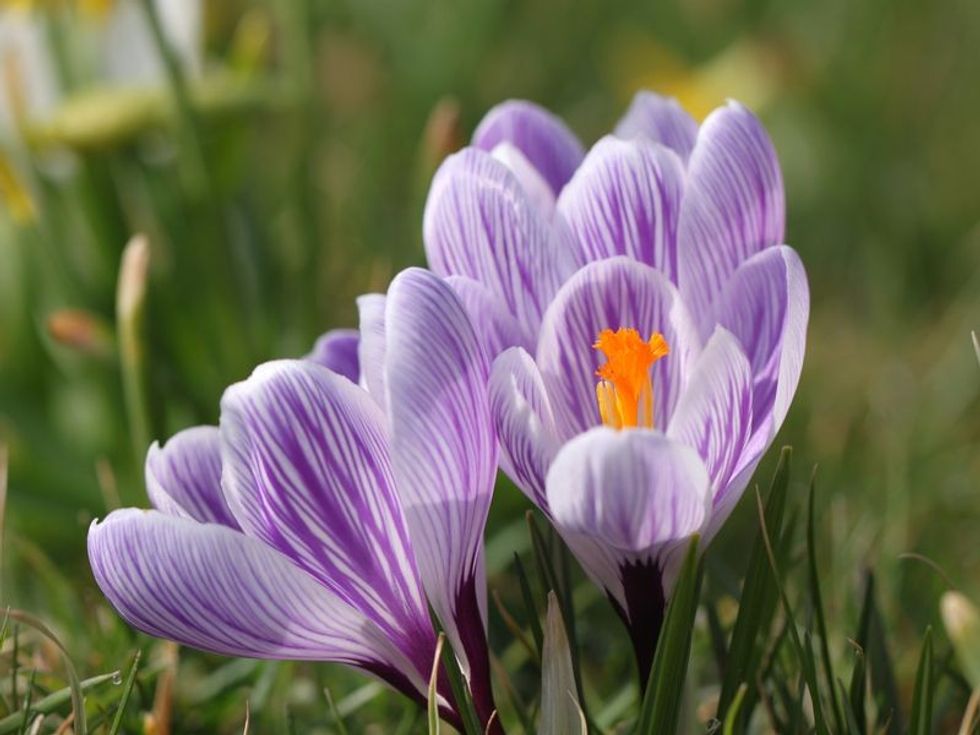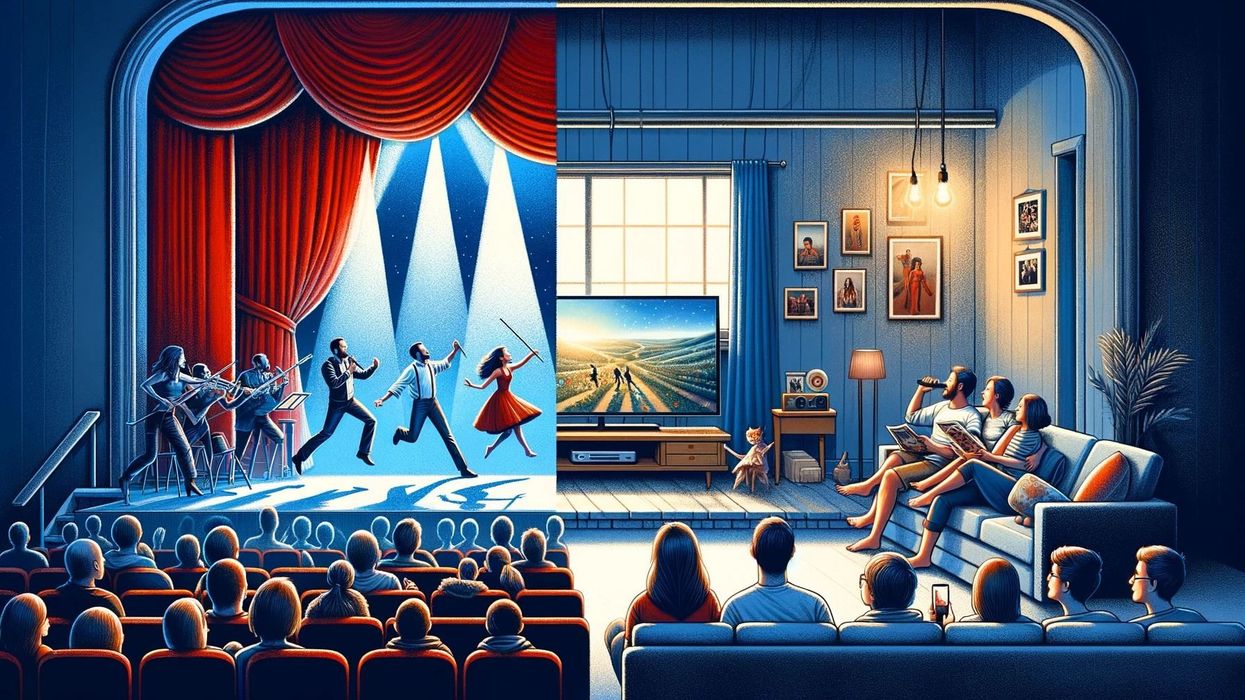What Colors Make Violet? Creating The Most Versatile Violet

Violet is a color that needs no explanation.
You know that the colors of the rainbow always start with the color violet, but are you really familiar with this beautiful color? Violet is a vibrant color that communicates deep meanings for many people.
For many people, this color stands as a symbol of nobility and royalty. Luxury, wealth, and power are represented by this color in some cultures. It is a common fact that mixing red and blue together gives you a purple color, but mixing red and blue also gives a violet color.
What makes these two colors different? One difference is the shade. Violet is a lighter shade when compared to purple.
Violet is also closer to the color blue in terms of tone. In fact, red and blue can be made a darker shade by mixing in a violet color instead of black. Violet can also be used to make yellow and orange lighter if you find it too bright.
By mixing warm blue and cool red, you can make a purple color. In the same way, by adjusting the warm and cool factors of the red and blue colors, you can also create violet.
The temperature of colors should be considered during color mixing.
Colors like blue and green are considered cool and colors like orange and red are considered warm. Red forms purple and violet shades since they contain a hint of cool blue, while in warms shades red is more like orange due to its yellow tint.
The world of color theory is more than just shades, it's also about how each shade becomes different from the others. The color violet is not simply one color. There are different shades to this beautiful color. So, let us learn about the color violet in more depth.
After reading more about how to create the color violet, do read about what colors make blue? and what colors make orange?
How do you create the perfect violet?
There are numerous ways to make the color violet. Different colors that are seen in the color wheel combine together to make the violet color. However, during the color mixing process, you might’ve come across shades of purple that just don’t seem like pure violet. The art of color mixing can be difficult to figure out.
Violet is a lighter shade of purple. On the color wheel, we often find ourselves confused between the color violet and the color purple.
Violet is actually a shade of purple, so, the question is how do you make the perfect violet color? Among the different shades of purple, how do you distinguish a violet color from the wide range of colors that are related to purple?
What colors make violet? To make purple, you have to mix red and blue.
The amount of the two colors used in color mixing will decide on the shade of purple color you produce. If you want the purple color to have a redder shade, mixing more red into the mixture will be helpful.
In the same way, if you want the mixture created to be bluer, then combining blue color in a higher amount will make it a dark purple with a more prominent blue shade.
Since we are already aware of the fact that violet is among the different shades of purple, it should be easy to create a violet color once you’ve made purple paint. Violet can be created by mixing colors that make a shade of purple.
A red-violet can be created by adding more red into the mixture.
Similarly, blue makes the violet shade darker and bluer. The shade of purple created through a blue and red mixture depends on the amount of these primary colors that you use to make your violet.
Other color combinations create a violet color, but color mixing blue and red is the best way to create a pure purple color. A combination of these two colors will create a much better violet color as well.
What Colors To Mix To Make Purple Muted
Adding muted colors besides clear colors creates a beautiful contrast in art. If you want to have some of your colors noticed more, having a muted background will be very helpful.
Among the different shades of dark purple, adding muted purple will help to create the right mood for your art. How do you create a muted color then?
This color saturation is achieved by mixing black, grey, or white colors to the color that you want to mute. A muted color palette will have a similar range of hues as a regular color palette. There are many warm and cool muted colors made just like regular colors.
To make muted purple, the same method is used. Different muted shades related to the color purple are made by adding black, white, or grey. Sometimes, brown is also used as a muting additive.
By combining these colors with purple, you can create a different hue of muted purple every time. Black and white are used to make purple colors light or dark.
To make a lighter shade of a muted purple color, more white is added. When you add white, you create what's called a tint. Similarly, to make a darker hue or shade of purple color, more black is added to the muted purple.
Another great way to mute a color is by mixing it with its complementary color. When complementary colors are added with the color, the resulting mixture is a muted shade.
A complementary color can be found directly across from a color in the color wheel. The complementary color of purple is yellow. Mixing a small amount of yellow to purple will make the shade of purple muted.
A warm yellow that is closer to orange will make a muted purple warm. Red-yellow will also make a warm, muted purple. In the same sense, using cooler yellow (like cadmium yellow) makes the purple shade of a muted color cool.
So, if you want a muted purple to have a cool tint, then add a yellow shade closer to cadmium yellow to it. Combining different shades of purple and yellow will give a different shade of muted purple.
By going through the color wheel in-depth, one can create several different shades of muted purple.

Shades Of Violet
Very often, we assume that just because something looks like violet that it must be violet. Some of us even address every shade of purple as violet. It is important to put together different shades of violet and distinguish between them.
If you are into painting, understanding the different shades of violet and how to mix colors in an appropriate way is a valuable lesson that will improve your art projects. By studying a color chart of the different shades of purple, we can also discover different colors of violet.
This will be helpful when you want to mix colors in your artwork. So, get to know the different shades of violet!
Tyrian purple is the oldest color and appeared during the Neolithic period in caves and other sites. This is a deep purple dye. The process of making this dye is very expensive, which makes it a color of great value.
In the present day, there are various hues of violet created by mixing different colors with it. The resulting tint of the violet color depends on the color that is mixed with it.
Lavender is light violet. Indigo is a dark blue which is closer to an ultramarine blue shade. Byzantium is also a dark shade of violet.
Mauve is a light tint of purple, very similar to a violet color. Lilac has a pale violet tone and is related to the color of lilac flowers. Iris is another tint of violet that is a combination of blue-violet.
Mauve and mulberry are also different hues of purple. The orchid color of orchid flowers is a combination of red and purple.
Periwinkle is a mix of blue and violet. Puce is a dark red shade with a hint of purple. The list goes on.
Since violet is closer to a blue color, different types of blue make different hues of violet. Shades like ultramarine blue create a darker shade of violet while light blue colors create a lighter shade of violet.
The muted violet will also have different hues. By studying the color wheel, you can understand how to mix colors with violet to create various color options.
Is violet the same as magenta?
It's common to be confused about combinations of different pinks and purples. When we pick purple paint, it's pretty hard to determine exactly which shade of purple the color is. Although this happens to the best of us, it is always a good idea to be well aware of the difference between these different purples.
Among the different purples, magenta and violet are sometimes confused as the same color. What colors make violet and what colors make magenta? Where are these two colors on a color chart? Are the colors mixed together to make these two colors different from each other? Let us learn more about them.
On a color chart, violet and magenta are represented as different colors. Magenta is a light, purple color. It has quite a bit of red in it.
A mix of purple and red, this color often gives looks pinkish. It is often confused with pink or purple. Magenta is made by mixing blue and red just like any other purple color, but its hue is quite different.
Magenta also refers to a dye obtained from a substance with a green, bronze surface color which dissolves to a red shade. In the color chart, magenta is located somewhere between blue and red.
Magenta is also seen as close to the primary colors because it reflects both red and blue while absorbing green. At the same time, violet is more inclined towards the secondary color blue. While magenta is closer to red, violet is closer to blue.
In a color wheel, magenta, which is an additive secondary color, appears midway between red and violet. Magenta light is made by producing a mix of violet and red lights at equal intensity.
Violet and red are the two main components of magenta. So, it's quite clear that magenta and violet are not the same. There are big differences in both these colors.
However, violet is a part of magenta, even if magenta is not a part of violet. Once you see the color chart and the position of both these colors in it, the difference becomes clearer.
What other colors can you make with purple?
Now that we have talked about purple, violet, and magenta, let's talk about some other similar colors. How do we make all the different colors?
Well, obviously we do this by mixing together different colors. The red, blue, and green primary colors work together and form the various colors that we see. The primary colors work together to form secondary colors.
Purple is such a secondary color. Purple can be further mixed with primary colors to form tertiary colors. Different purple hues mix with different hues of primary colors to form a variety of colors for you to paint with.
For example, purple and red mix together to form the famous magenta color. But, this is not the only color formed. When mixing different purples with different reds, the resultant color will also change. The bottom line is that mixing purple and red together gives a combination of these two colors in a range of different hues.
Depending on the amount of each color used, the name of the color created also changes. Since purple and yellow are complementary colors, these two mix together to form a muted purple color.
The blues formed using purple can be mixed with yellow to form greenish colors, since the usual yellow and blue combination makes a brilliant green color. Although complementary colors do not form a bright color, we can mix them in another way like this to form different colors.
Purple, when mixed with green, forms either a dark shade of green or these two colors mix together to form a brown color.
If we add more green to the mixture, the result will be a green-gray color. If more purple is added, then the resulting color will have more of a brown shade.
Since purple is a mix of red and blue, the amount of red and blue in purple is always a determining factor. If blue is more purple, the color gets darker, and, if there is more red, then the color gets brighter.
Whatever you want to do when mixing colors, a huge factor is the tone of the colors that you want to mix. A tiny change in the hue can result in a new color being formed.
Which is the most versatile shade of purple?
Each and every color is beautiful in its own way. Whether it's dull or bright colors, lighter or darker hues, each and every color plays an important part in our world to make it more beautiful.
Sometimes we find shades of a color we never imagined existed. Some shades differ more from the original color and some are more similar. Some shades are more versatile than others.
In that sense, what is the most versatile shade of purple? It is important to know that what you find versatile may not be what others find versatile. However, let's look at some shades of purple that are worth mentioning.
Some purple paints are unique, which makes them perfect as versatile paint. Amethyst is a beautiful shade of purple that you can be used in painting your home. It is a dark purple color that gives a royal look.
Mauve is also a distinctive variety of purple that has a gray undertone. Although it is a dull color, this paint looks too good to ignore. Wine, a flattering shade of purple, is a favorite paint for many.
The exquisite visuals of this paint make it popular. Fuchsia is a magenta-mix hue of purple. This versatile color is very calming to look at.
Earth tone shades of purple also look great. They are another way to mix muted purples apart from a combination with yellow.
Blue and burnt sienna are mixed together to form a classic shade of purple. To give the resulting purple a bit of a darker shade, either alizarin crimson or cadmium red is mixed along with it.
There are different shades of purple used in various artworks, including but not limited to paintings. The long history and evolution of the color purple has ensured each shade is amazing in itself.
Here at Kidadl, we have carefully created lots of interesting family-friendly facts for everyone to enjoy! If you liked our suggestions for what colors make violet then why not take a look at what colors make peach? or what colors make pink?
We Want Your Photos!
More for You
See All
Bachelor of Science specializing in Mass Communication.

Adekunle Olanrewaju JasonBachelor of Science specializing in Mass Communication.
Disclaimer
1) Kidadl is independent and to make our service free to you the reader we are supported by advertising. We hope you love our recommendations for products and services! What we suggest is selected independently by the Kidadl team. If you purchase using the Buy Now button we may earn a small commission. This does not influence our choices. Prices are correct and items are available at the time the article was published but we cannot guarantee that on the time of reading. Please note that Kidadl is a participant in the Amazon Services LLC Associates Program, an affiliate advertising program designed to provide a means for sites to earn advertising fees by advertising and linking to Amazon. We also link to other websites, but are not responsible for their content.
2) At Kidadl, we strive to recommend the very best activities and events. We will always aim to give you accurate information at the date of publication - however, information does change, so it’s important you do your own research, double-check and make the decision that is right for your family. We recognise that not all activities and ideas are appropriate for all children and families or in all circumstances. Our recommended activities are based on age but these are a guide. We recommend that these ideas are used as inspiration, that ideas are undertaken with appropriate adult supervision, and that each adult uses their own discretion and knowledge of their children to consider the safety and suitability. Kidadl cannot accept liability for the execution of these ideas, and parental supervision is advised at all times, as safety is paramount. Anyone using the information provided by Kidadl does so at their own risk and we can not accept liability if things go wrong.
3) Because we are an educational resource, we have quotes and facts about a range of historical and modern figures. We do not endorse the actions of or rhetoric of all the people included in these collections, but we think they are important for growing minds to learn about under the guidance of parents or guardians.







